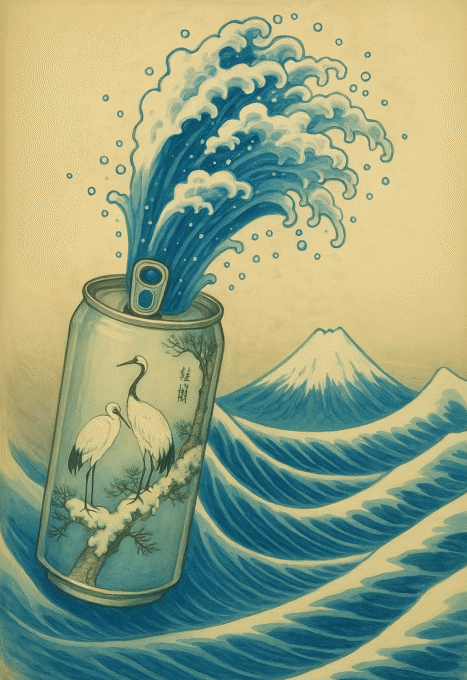When we think of woodblock prints, most of us picture picturesque landscapes or poetic depictions of nature, with waves crashing in the distance or majestic Mt. Fuji standing tall. What we don’t often consider is the intersection of these centuries-old masterpieces with the world of modern science, technology, engineering, and mathematics (STEM). But the truth is, this overlap might be more connected than we think, especially when we look at the clever ways both fields approach creativity, patterns, and design.
Take Katsushika Hokusai’s The Great Wave off Kanagawa, for instance. On first glance, it seems like just another iconic scene of crashing waves. But when you step back and think about it, the print’s detailed yet calculated use of geometry mimics the kind of design thinking we see today in engineering. The curves of the wave, the froth and turbulence, are almost like a visual representation of fluid dynamics, the very principles that engineers use to design ships or study ocean currents. Who knew the wave was not only foreshadowing climate change awareness but also serving as an unwitting precursor to modern STEM!
In the world of robotics, we see similar lines of inspiration. A Japanese robotics lab once attempted to teach an AI to appreciate haiku, a striking intersection of machine learning and human emotion. This idea of melding logic with artistry mirrors Hokusai’s own blend of technical skill and poetic beauty. Similarly, today’s engineers are looking to nature’s branching patterns for everything from efficient network designs to better energy use in buildings, all thanks to concepts derived from the very same woodblock prints.
But it doesn’t stop there. In today’s classrooms, 3D printers hum alongside watercolors. Engineers look to nature’s branching patterns for smarter designs, just as Edo-period artists looked to plum blossoms for truth. A Japanese robotics lab once taught an AI to appreciate haiku—because why not? Meanwhile, a teenager somewhere is programming a game inspired by The Great Wave, where the boss level is literally climate change. The worlds of STEM and ukiyo-e aren’t paralle, they’re intersecting. Which is lucky, really. Because when the machines rise, at least they’ll understand composition.
Background; The Great Wave by Katsushika Hokusai (1760 – 1849)
Label on can; Cranes on Snowy Pine by Katsushika Hokusai (1760 – 1849)
The CAN; Well that’s up to you to decide (2025 – 2275) unless recycled
Author’s Note
No robots were harmed in the making of this article, though one did briefly try to fold itself into an origami crane. The author (me) encourages all readers, STEM enthusiasts, art lovers, and the perpetually curious, to find five quiet minutes this week to sketch something, code something, or admire the nearest pine tree. Bonus points if snow or subtle existential awe is involved. So somewhere between a circuit board and a flying crane lies the sweet spot of creative enlightenment. If you spot it, please send a postcard. Preferably in a woodblock print and think, somewhere between algorithms and ink lies the very human act of making meaning. And yes, coffee still helps.


Leave a Reply